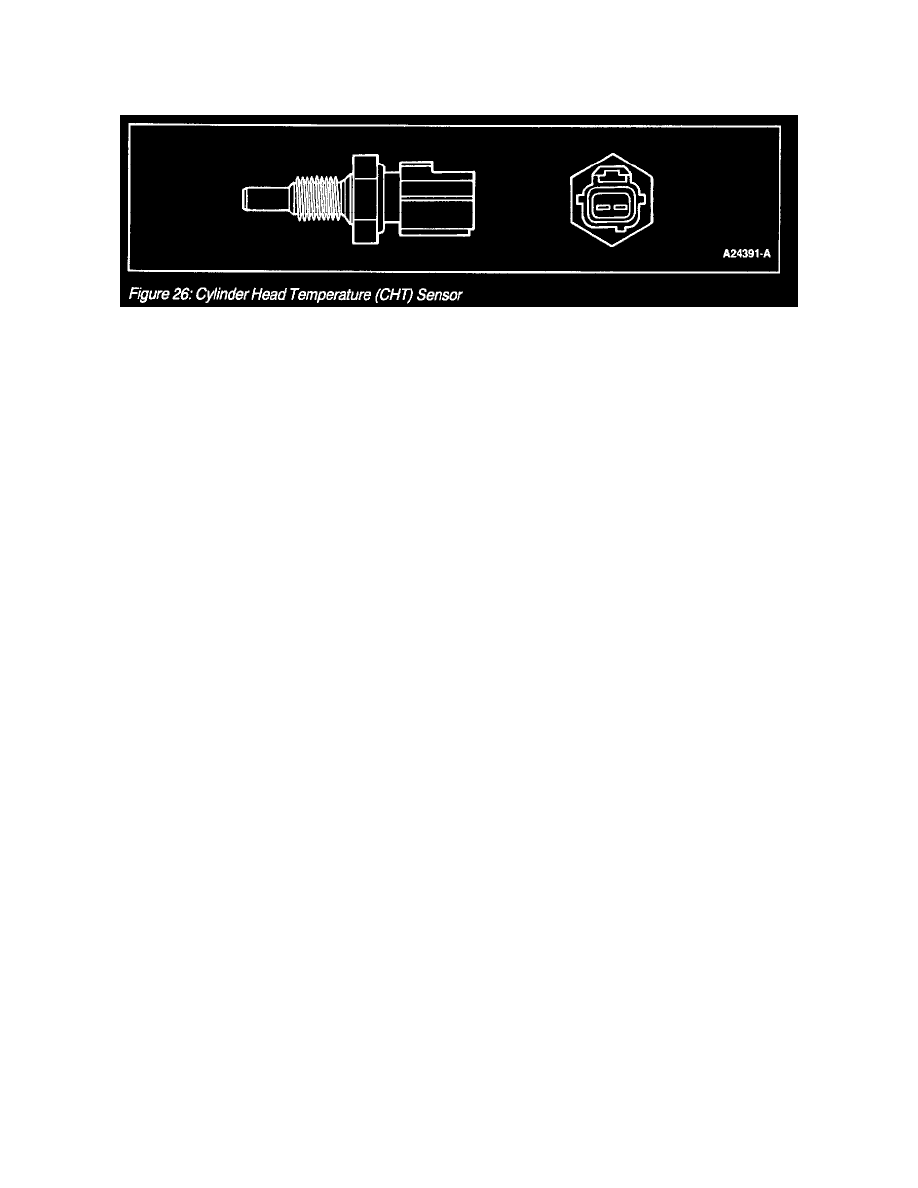Navigator 2WD V8-5.4L DOHC VIN R (2001)

Engine Temperature Sensor: Description and Operation
Cylinder Head Temperature Sensor
CYLINDER HEAD TEMPERATURE SENSOR
Cylinder Head Temperature (CHT) Sensor
The Cylinder Head Temperature (CHT) sensor (Figure 26) is a thermistor device in which resistance changes with temperature. The electrical
resistance of a thermistor decreases as temperature increases, and increases as temperature decreases. The varying resistance affects the voltage drop
across the sensor terminals and provides electrical signals to the PCM corresponding to temperature.
Thermistor-type sensors are considered passive sensors. A passive sensor is connected to a voltage divider network so that varying the resistance of
the passive sensor causes a variation in total current flow.
Voltage that is dropped across a fixed resistor in series with the sensor resistor determines the voltage signal at the PCM. This voltage signal is equal
to the reference voltage minus the voltage drop across the fixed resistor.
The Cylinder Head Temperature (CHT) sensor is installed in the aluminum cylinder head and measures the metal temperature. The CHT sensor can
provide complete engine temperature information and can be used to infer coolant temperature. If the CHT sensor conveys an overheating condition to
the PCM, the PCM would then initiate a fail-safe cooling strategy based on information from the CHT sensor. A cooling system failure such as low
coolant or coolant loss could cause an overheating condition. As a result, damage to major engine components could occur. Using both the CHT
sensor and fail-safe cooling strategy, the PCM prevents damage by allowing air cooling of the engine and limp home capability. For additional
information, refer to Powertrain Control Software for Fail-Safe Cooling Strategy details.
The CHT sensor:
^
is mounted into the wall of the cylinder head and is not connected to any coolant passages.
^
sends a signal to the PCM indicating cylinder head temperature.
^
If the temperature exceeds 126°C (258°F) 5.4L, 130°C (265°F) 4.6L, the PCM disables four fuel injectors at a time. The PCM will alternate
which four fuel injectors are disabled every 32 engine cycles. The four cylinders the are not being fuel injected act as air pumps to aid in
cooling the engine.
^
If the temperature exceeds 154°C (310°F) 5.4L, 166°C (330°F) 4.6L, the PCM disables all of the fuel injectors until the engine temperature
drops below 154°C (310°F) 5.4L, 153°C (308°F) 4.6L.
